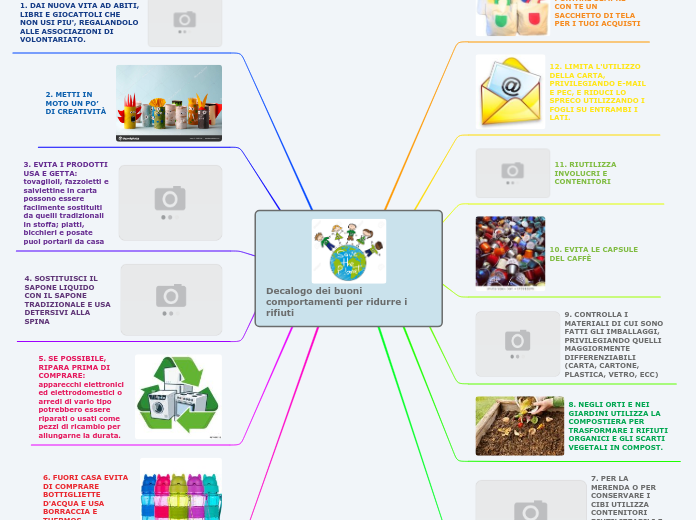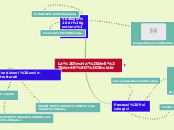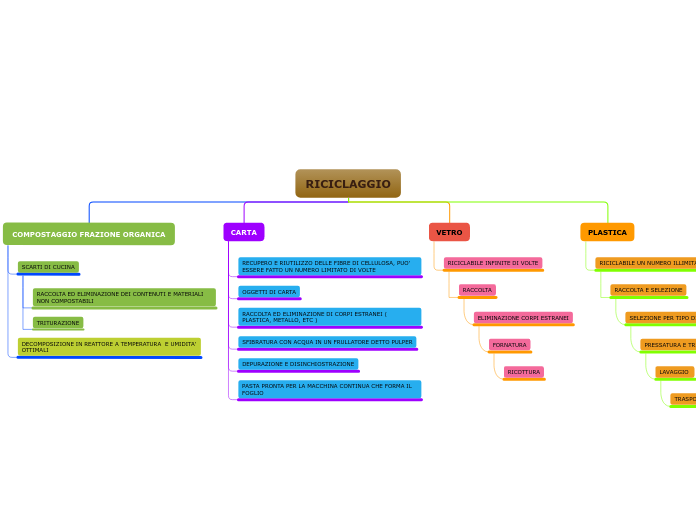Decalogo dei buoni comportamenti per ridurre i rifiuti
Use this mind map to plan and easily organize your lessons.
6. FUORI CASA EVITA DI COMPRARE BOTTIGLIETTE D'ACQUA E USA BORRACCIA E THERMOS
5. SE POSSIBILE, RIPARA PRIMA DI COMPRARE: apparecchi elettronici ed elettrodomestici o arredi di vario tipo potrebbero essere riparati o usati come pezzi di ricambio per allungarne la durata.
4. SOSTITUISCI IL SAPONE LIQUIDO CON IL SAPONE TRADIZIONALE E USA DETERSIVI ALLA SPINA
Homework improves student achievement and teaches students to work independently.
Provide your students with feedback on their homework, as this is an essential instrument allowing you to enhance the significance of assignments in their overall academic life.
3. EVITA I PRODOTTI USA E GETTA: tovaglioli, fazzoletti e salviettine in carta possono essere facilmente sostituiti da quelli tradizionali in stoffa; piatti, bicchieri e posate puoi portarli da casa
2. METTI IN MOTO UN PO’ DI CREATIVITÀ
An actual experience with discussions will help students grasp the connections between different topics. Students will have the chance to use their knowledge gathered in class or during the personal researches and be able to participate effectively in the discussion as group members.
1. DAI NUOVA VITA AD ABITI, LIBRI E GIOCATTOLI CHE NON USI PIU', REGALANDOLO ALLE ASSOCIAZIONI DI VOLONTARIATO.
More and more teachers are using visual aids and other helping tools to exemplify lessons.
7. PER LA MERENDA O PER CONSERVARE I CIBI UTILIZZA CONTENITORI RIUTILIZZABILI E NON SACCHETTI DI PLASTA, ALLUMINIO O CARTA.
8. NEGLI ORTI E NEI GIARDINI UTILIZZA LA COMPOSTIERA PER TRASFORMARE I RIFIUTI ORGANICI E GLI SCARTI VEGETALI IN COMPOST.
9. CONTROLLA I MATERIALI DI CUI SONO FATTI GLI IMBALLAGGI, PRIVILEGIANDO QUELLI MAGGIORMENTE DIFFERENZIABILI (CARTA, CARTONE, PLASTICA, VETRO, ECC)
10. EVITA LE CAPSULE DEL CAFFÈ
11. RIUTILIZZA INVOLUCRI E CONTENITORI
12. LIMITA L'UTILIZZO DELLA CARTA, PRIVILEGIANDO E-MAIL E PEC, E RIDUCI LO SPRECO UTILIZZANDO I FOGLI SU ENTRAMBI I LATI.
Establish your goals.
What do you want your students to achieve?
13. RICORDA DI PORTARE SEMPRE CON TE UN SACCHETTO DI TELA PER I TUOI ACQUISTI









